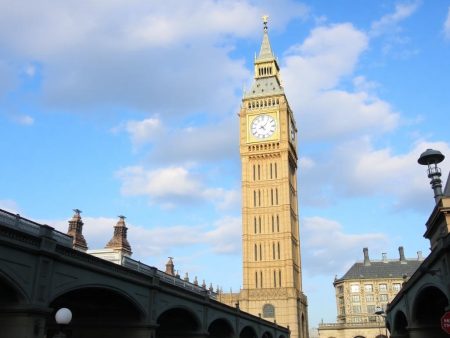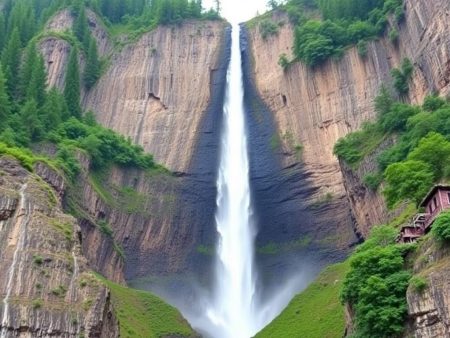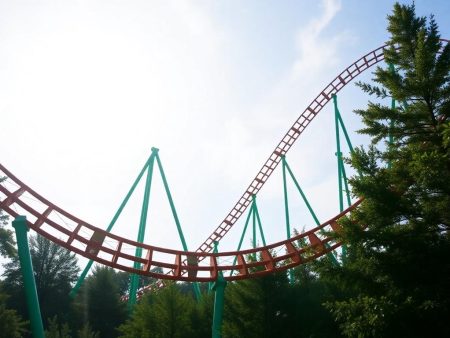Le vette torreggianti hanno sempre catturato l'immaginazione di avventurieri e amanti della natura. Nel vasto e diversificato paesaggio degli Stati Uniti, una montagna si erge al di sopra delle altre, sia letteralmente che figurativamente. La montagna più alta del paese non è solo una meraviglia geologica; è un simbolo della bellezza selvaggia e dello spirito aspro che definisce la natura selvaggia americana.
Immerso nel cuore di
Scopri Denali: la montagna più alta degli Stati Uniti e la sua natura selvaggia mozzafiato
Le vette torreggianti hanno sempre catturato l'immaginazione di avventurieri e amanti della natura. Nel vasto e diversificato paesaggio degli Stati Uniti, una montagna si erge al di sopra delle altre, sia letteralmente che figurativamente. La montagna più alta del paese non è solo una meraviglia geologica; è un simbolo della bellezza selvaggia e dello spirito aspro che definisce la natura selvaggia americana.
Converti l'altezza delle persone, degli edifici, delle montagne e dei monumenti più alti in m, piedi e pollici per confrontarli
0' 0" equivale a 0,0 cm o 0,00 m.
Adagiato nel cuore dell'Alaska, questo maestoso gigante attrae scalatori, fotografi e sognatori da tutto il mondo. La sua cima innevata e i panorami mozzafiato lo rendono una destinazione da non perdere per chi è alla ricerca di meraviglie naturali mozzafiato. Ma cosa rende questa vetta così straordinaria? Scopriamo la storia dietro il punto più alto degli Stati Uniti e cosa lo rende una vera icona della natura.
Panoramica della montagna più alta degli Stati Uniti
Denali, precedentemente noto come Mount McKinley, è la montagna più alta degli Stati Uniti. Si erge a 20.310 piedi (6.190 metri) sul livello del mare, il che lo rende la vetta più alta del Nord America. Situato nell'Alaska centro-meridionale all'interno del Denali National Park and Preserve, è una caratteristica importante dell'Alaska Range.
Questa montagna ha due cime principali: la South Summit, che è più alta, e la North Summit, che si eleva fino a 19.470 piedi. Avventurieri da tutto il mondo tentano di scalarne le vette, incontrando temperature estremamente fredde e condizioni meteorologiche difficili.
Il nome Denali, che significa "The High One" nella lingua Koyukon Athabaskan, riflette la sua importanza culturale per i nativi dell'Alaska. La sua importanza come punto di riferimento naturale lo ha reso anche un simbolo della natura selvaggia e dell'esplorazione americana.
Posizione e geografia
Denali, la montagna più alta degli Stati Uniti, si trova in Alaska, uno stato rinomato per la sua vasta natura selvaggia e il suo terreno accidentato. La posizione della montagna e le caratteristiche circostanti la rendono un punto focale per gli appassionati di geografia e gli avventurieri.
Dove si trova
Denali si trova nell'Alaska centro-meridionale, all'interno del Denali National Park and Preserve. Il parco si estende su oltre 6 milioni di acri, offrendo paesaggi incontaminati e diversi ecosistemi. La montagna si trova a circa 130 miglia (209 chilometri) a nord-nordovest di Anchorage e 155 miglia (249 chilometri) a sudovest di Fairbanks. La sua posizione remota nella catena montuosa dell'Alaska ne esalta la serenità e l'isolamento, un'attrazione fondamentale per i visitatori.
Paesaggio circostante
L'area circostante comprende vette imponenti, fitte foreste e fiumi glaciali. La catena montuosa dell'Alaska, di cui fa parte Denali, presenta una serie di montagne aspre coronate da neve e ghiaccio. Enormi ghiacciai, come il ghiacciaio Kahiltna, scorrono lungo i suoi pendii, contribuendo alla sua straordinaria bellezza. Fauna selvatica come orsi grizzly, alci e caribù abitano il parco, coesistendo accanto alla tundra alpina e alla rigogliosa vegetazione di pianura. Questi elementi creano un ambiente dinamico e incontaminato attorno a Denali.
Significato storico
Denali ha una ricca storia intrecciata con narrazioni culturali, esplorative e ambientali. I popoli indigeni, in particolare i Koyukon Athabaskan, hanno venerato la vetta per secoli, chiamandola "Denali", che significa "L'Alto". Le loro tradizioni orali e i legami spirituali sottolineano l'importanza culturale e ancestrale della montagna.
Nel 1794, l'esploratore britannico George Vancouver fornì il primo avvistamento registrato del Denali da parte di un europeo. Verso la fine del XIX secolo, la cima attirò naturalisti e cercatori d'oro durante l'era della corsa all'oro in Alaska. Fu ufficialmente chiamato Mount McKinley nel 1896 in onore del presidente William McKinley, sebbene il nome nativo persistesse tra la gente del posto e i nativi dell'Alaska.
La storia dell'arrampicata sulla montagna iniziò con il tentativo del 1903 del giudice James Wickersham, anche se la prima vetta di successo fu raggiunta il 7 giugno 1913, guidata da Hudson Stuck, Harry Karstens, Walter Harper e Robert Tatum. Harper, nativo dell'Alaska, fu il primo individuo a mettere piede sulla vetta.
Il nome Denali è stato ripristinato nel 2015 dal Dipartimento degli Interni degli Stati Uniti, a testimonianza del suo profondo significato culturale. La sua narrazione storica rimane una testimonianza della resilienza umana, dell'esplorazione e del rispetto per il patrimonio indigeno.
Arrampicata e ricreazione
Denali, con la sua imponente altezza e il terreno impegnativo, attrae scalatori, avventurieri e turisti da tutto il mondo. La sua vasta natura selvaggia offre opportunità sia per alpinisti esperti che per visitatori occasionali in cerca di esperienze all'aria aperta.
Percorsi di arrampicata popolari
Gli scalatori che tentano di raggiungere la cima del Denali spesso scelgono tra diversi percorsi stabiliti, ognuno dei quali varia in difficoltà e lunghezza. Percorso del contrafforte occidentale, il più popolare, rappresenta circa 80% di tentativi di arrampicata. Inizia al ghiacciaio Kahiltna, coprendo una distanza di 13 miglia (21 chilometri) con un dislivello di oltre 13.000 piedi (3.962 metri). Questo percorso è relativamente accessibile agli scalatori con esperienza moderata, ma richiede comunque la preparazione per le sfide meteorologiche e di altitudine estreme.
IL Percorso del ghiacciaio Muldrow, il percorso originale intrapreso durante la prima salita di successo nel 1913, presenta una salita più remota e tecnica. Questo percorso si trova sul versante nord della montagna, e richiede abilità aggiuntive per navigare tra i suoi crepacci e le aree soggette a valanghe. Altre opzioni avanzate includono la Cresta di Cassin, noto per i suoi sentieri ripidi ed esposti, che richiedono competenza, resistenza e competenza nell'attrezzatura.
Attività per i turisti
Per chi non è scalatore, il Denali National Park and Preserve offre una vasta gamma di attività ricreative. Osservazione della fauna selvatica è un'attrazione importante, con opportunità di avvistare orsi grizzly, lupi, alci e caribù. Visite guidate e programmi guidati dai ranger consentono ai visitatori di esplorare gli ecosistemi del parco e di conoscerne la storia.
Percorsi escursionistici, come il Sentiero alpino selvaggio e il Sentiero del lago Horseshoe, soddisfano diversi livelli di forma fisica e offrono viste mozzafiato sui paesaggi circostanti. Durante i mesi invernali, attività come slitta trainata da cani E sci di fondo offrono modi unici per vivere la natura innevata del parco. I visitatori possono anche fare voli panoramici sul Denali per ammirarne la cima e i ghiacciai senza percorrere i suoi sentieri accidentati.
Fauna selvatica ed ecosistema
La fauna selvatica del Denali National Park prospera nei suoi ecosistemi diversificati ed espansivi. Oltre 39 specie di mammiferi abitano il parco, tra cui orsi grizzly, lupi, alci, caribù e pecore di Dall. Anche mammiferi più piccoli come scoiattoli di terra artici, volpi e lepri scarpa da neve sono abbondanti. Uccelli migratori e residenti, come aquile reali, pernici bianche e corvi, accrescono la diversità aviaria della zona, con oltre 160 specie di uccelli registrate.
La vita vegetale varia a seconda dell'altitudine, passando dalle foreste boreali a quote più basse alla tundra alpina e alla roccia sterile ad altitudini più elevate. Gli abeti rossi dominano le foreste, mentre muschi e licheni sono prevalenti nelle zone di tundra. Fiori selvatici come l'epilobio e il lupino sbocciano durante l'estate, aggiungendo esplosioni di colore al paesaggio.
L'ecosistema supporta reti alimentari complesse che dipendono da specie autoctone e cicli stagionali. Predatori come lupi e orsi svolgono ruoli essenziali nel mantenimento dell'equilibrio ecologico. Salmoni e pesci d'acqua dolce nei fiumi e nei torrenti forniscono sostentamento a vari animali. Nonostante gli inverni rigidi, le specie sono ben adattate, assicurando la sopravvivenza in condizioni estreme.
L'ecosistema di Denali affronta sfide, tra cui il cambiamento climatico e l'attività umana. Le temperature in aumento influenzano i ghiacciai, gli habitat e i modelli di migrazione della fauna selvatica. Gli sforzi di conservazione si concentrano sul monitoraggio delle specie, sulla conservazione della vegetazione e sulla riduzione degli impatti esterni.
Conclusione
Denali è un simbolo mozzafiato di bellezza naturale, patrimonio culturale e determinazione umana. La sua imponente presenza ispira avventurieri e visitatori, ricordando a tutti l'importanza di preservare paesaggi così straordinari. Che si tratti di scalare le sue vette, esplorare il suo vasto parco o semplicemente ammirarne la maestosità da lontano, Denali offre un legame unico con lo spirito selvaggio e indomito della natura.
Domande frequenti
Cos'è Denali e dove si trova?
Denali è la montagna più alta degli Stati Uniti e del Nord America, con i suoi 20.310 piedi (6.190 metri). Si trova nell'Alaska centro-meridionale all'interno del Denali National Park and Preserve, a circa 130 miglia da Anchorage e 155 miglia da Fairbanks.
Cosa significa il nome "Denali"?
Il nome "Denali" significa "L'Alto" nella lingua Koyukon Athabaskan, a testimonianza della sua importanza culturale e ancestrale per i nativi dell'Alaska.
Perché il Denali è importante?
Denali ha un significato geologico, culturale e storico. È un simbolo della natura selvaggia americana, un fulcro del Denali National Park e un sito di esplorazione e storia dell'alpinismo, evidenziando al contempo il patrimonio indigeno dell'Alaska.
Quali sono le principali vie di arrampicata sul Denali?
La West Buttress Route è la più popolare e accoglie scalatori con esperienza moderata. La Muldrow Glacier Route e la tecnica Cassin Ridge sono opzioni per scalatori più avanzati, che richiedono una vasta competenza.
Quali animali selvatici si possono trovare nel Parco Nazionale Denali?
Il Denali National Park ospita oltre 39 specie di mammiferi, tra cui orsi grizzly, alci, caribù, lupi e pecore di Dall, oltre a numerose specie di uccelli. I suoi ecosistemi diversificati spaziano dalle foreste alla tundra alpina.
Oltre all'arrampicata, quali altre attività ricreative possono praticare i visitatori?
I visitatori possono fare escursioni, osservare la fauna selvatica, fare slitte trainate da cani, fare sci di fondo e voli panoramici sugli splendidi paesaggi del parco. I tour guidati esplorano anche la ricca bellezza naturale della zona.
Quando è stato scalato per la prima volta il monte Denali?
La prima ascesa di successo del Denali avvenne il 7 giugno 1913. La scalata fu realizzata utilizzando la Muldrow Glacier Route, oggi una pietra miliare storica dell'alpinismo.
Come protegge il parco i suoi ecosistemi?
Il Denali National Park è impegnato in iniziative di conservazione, monitorando le specie selvatiche e mitigando gli impatti dei cambiamenti climatici e delle attività umane per preservare i suoi ecosistemi e la sua biodiversità.
Com'è il meteo sul Denali?
Il Denali è soggetto a temperature estremamente fredde e condizioni meteorologiche difficili tutto l'anno, con condizioni difficili che colpiscono gli scalatori e i visitatori del parco. La preparazione è essenziale per chiunque visiti la zona.
Perché un tempo il Denali veniva chiamato Monte McKinley?
Denali fu chiamato Mount McKinley nel 1896 da un cercatore d'oro in onore dell'allora candidato alla presidenza William McKinley. Nel 2015, il nome nativo "Denali" è stato ufficialmente ripristinato per riflettere il suo significato culturale.





